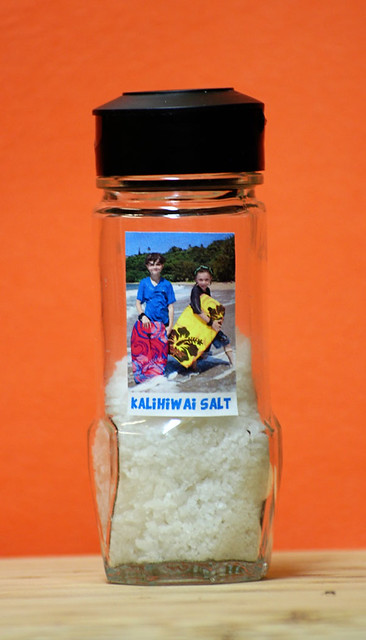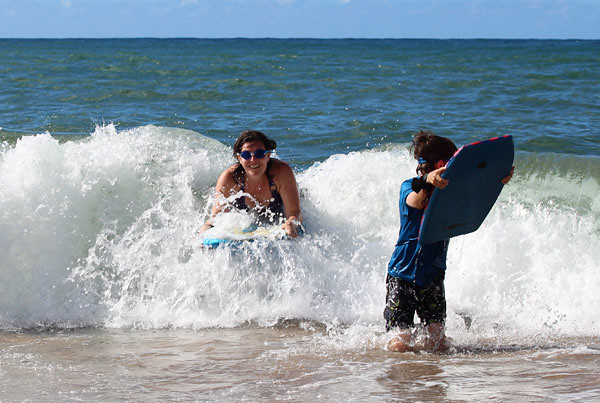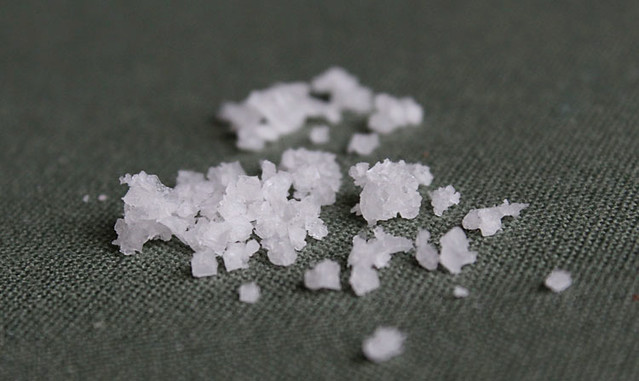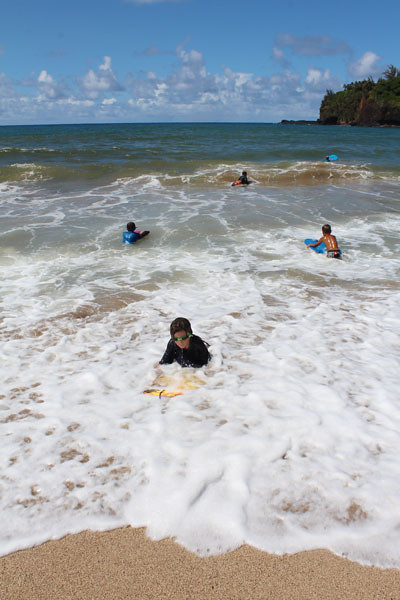
 We brought home a special souvenir from our recent vacation: sea salt collected at our newest favorite beach.
We brought home a special souvenir from our recent vacation: sea salt collected at our newest favorite beach.The north shore of Kauai is one of our happiest places. We visit Hanalei Bay every year or two, swimming and snorkeling and waking up early to the sound of roosters.
This year, we tried something new. One of my fantastic editors insisted we get boogie boards and head to Kalihiwai Beach, a beautiful little crescent of sand with a river running to the sea.
So we did. And it was all that she promised and more. My boys — often timid in the waves — took to the water like dolphins and rode the surf for days. My husband and I loved it too. I can't believe we waited this long to try it!
It was the perfect place to experiment with making sea salt. My 10-year-old son enthusiastically helped make two batches. He was so happy with the results he's added "making salt" to his grand plan for some sort of hybrid invention/manufacturing commune he expects to launch with his friends.
We ended up with large crystals of salt with a pleasantly briny bite. They'll make excellent finishing salt.
Harvesting salt is a simple process, provided you have a few resources: a container to carry salt water, something to filter the water, and a stove (or several weeks to let the water naturally evaporate).
A common sense warning up front: Only use sea water you think is reasonably clean. I'm no expert, but my feeling is that anywhere you're OK letting your kids swim and swallow a bit of water is probably OK for harvesting salt. And since flavors are unique to each location, be aware that your final product might be good, amazing, meh, or blech.
With that out of the way, here’s how we did it:
We filled empty bottles with ocean water. (From what I've read elsewhere, it's generally advisable to do this on a good-weather day.) Back at our room, we first poured the water through a paper towel-lined strainer and then through a coffee filter to remove sand, bits of seaweed, and other tiny debris. After the second straining, the water looked perfectly clear.
Next, we put the filtered water into a small pot and began boiling it on the stove top. Boiling of course speeds up evaporation, but it also kills any nasty things in the water. Since the Kalihiwai River flows into the bay where we gathered our batch, I wanted to be sure to eliminate any potential leptospirosis contamination.
Once the water was reduced by about half, I lowered the temperature and let it simmer until it was reduced by half again. Be careful not to burn the salt! Better to let it go too slow than too fast.

I poured out what was left into a shallow plate and put it in the oven on the lowest setting — for us, that was 170 degrees. I have no idea how long it took for the water to fully evaporate. It was at least a few hours. There's no need to baby-sit the salt. I simply turned the oven on when we were around, then turned it off when we went out for an adventure or turned in for the night.
Eventually the crystals were completely dry. We carefully scraped them loose from the plate, stirred them with a fork, and packaged them to take home.
Alternatively, you could set the salt water in the sun to dry, which can take weeks, or try a dehydrator. Make do with whatever you have.
We ended up with fairly large crystals, like kosher salt. And they're delicious. About five cups of sea water yielded about a third of a cup of salt.We sent some home with my mother, and took an itty-bitty amount home with us. But it's OK: We know how to make more.




